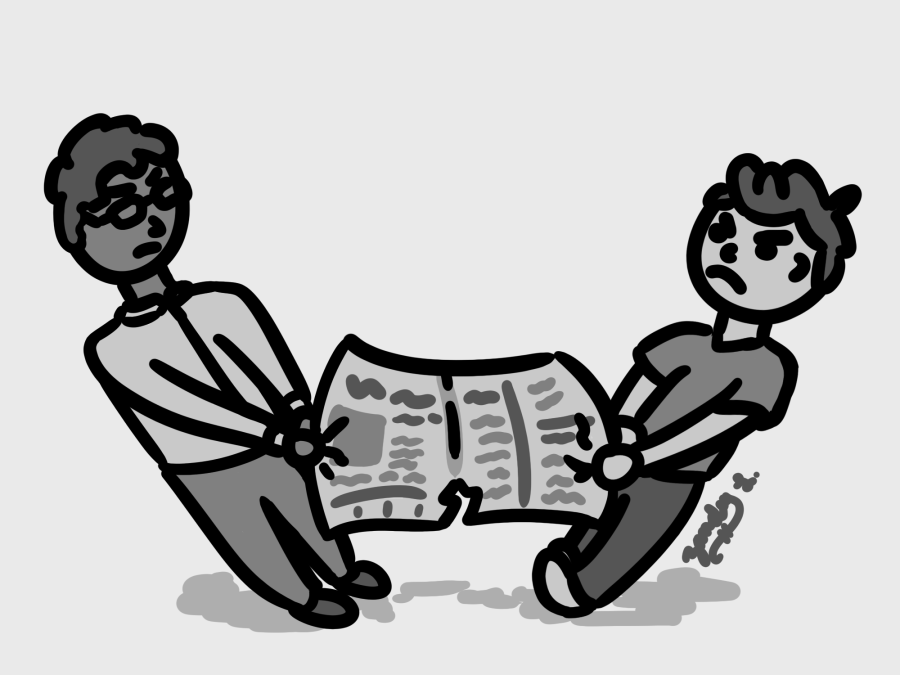Each year, many high school publications across the nation are forced to pull rather than publish certain stories. This is often due to school administrator or staff intervention, either to cover up an issue or preserve the image staff want the school to have.
On Aug. 20. in Winchester,VA., the Frederick County School Board sanctioned a policy that required administrators to approve every story produced by publications within the district. Despite many believing that this policy violates the First Amendment rights of the publications, the district is able to implement this rule due to the 1987 Supreme Court case Hazelwood v. Kuhlmeier, which allows school administrators and other staff members to censor student journalism and force students to pull stories.
However, this does not mean administrators can censor any story they want; there must be a reason for the censorship.
However, the power to veto stories often goes unquestioned, leading to students not being able to exercise their First Amendment rights. This ruling does not apply to 14 states, including California, thanks to the New Voices movement, a student run organization that seeks to counteract the Hazelwood v. Kuhlmeier case by raising awareness toward student censorship and encouraging state lawmakers to pass legislation that protects free speech for students.
Censorship will always exist if there is an unequal power dynamic, which is why giving students more independence will slowly rid school publications of censorship.
It is important to prevent suppression of the student press as they have the skills and opportunity to make a difference in their communities, but in some cases they aren’t able to due to coverups by administrators.
It is crucial to eliminate censorship at schools because often times school publications are the sources communities turn to for information regarding their schools.
The communities should not be receiving stories that have been tampered with by school administrators for that reason.
The first and most important step in avoiding the issue of unnecessary student censorship is to make all high school publications student-run, like the Paly publications.
A student-run publication not only helps to prevent censorship by letting the student leaders make important story decisions, it also increases their creativity by granting them more freedom to choose what they write about. Additionally, it teaches valuable lessons in problem-solving and communication with others in a work environment. These lessons can be transferred into other aspects of life and, eventually, the workplace.
Students in California are automatically given the right to make decisions within a publication; however, this is not the case in most states.
Students are given this right due to the California Student Free Expression Law which counteracts the Hazelwood v. Kuhlmeier ruling.
Giving students greater responsibilities not only allows them to learn more, it can help build confidence that carries into future endeavors a student may face.
In a student-run publication, each individual plays a crucial role in the creation of the final product. They must rely on one another, which teaches responsibility, collaboration and communication skills that are valuable in any workplace. Composure is another crucial lesson that students learn, as when producing a new issue, students are forced to make crucial last-minute adjustments due to unforeseeable hindrances. Students must ensure that the work they are producing is at a high enough quality to be published and viewed by the public.
Student leaders are sometimes asked to make important decisions that could lead to controversy and consequences, such as choosing their successors and punishing members for not meeting deadlines.
However, making these strenuous choices builds character and teaches students that they must live with the decisions they make, whether they be good or bad.
Despite the name “student-run,” adults can play important roles in a student-run publication. Ideal advisers not only teach students, but they also oversee the publication without being overbearing and provide guidance whenever necessary. A student-run publication does not mean that an adult opinion is not present in the decisions the student leaders make, but rather that an adult opinion will not trump that of the students on most issues. According to Ed Code 48907, it shall be the advisor’s responsibility to supervise the production of the pupil staff.
When students lead themselves, they are able to bring new perspectives to journalism and, in many cases, to take unique and rewarding risks that they otherwise may not be able to try.
Allowing students to be more hands-on within a publication enhances their learning experience, by furthering their own problem-solving skills if they are allowed to make and correct their own mistakes.
With society continuing to rapidly change its means of consuming media, students can offer fresh perspectives.
This could include increasing the use of social media to promote stories or using new technology for the design aspect of journalism. Letting students run school publications is a way for them to make a difference in the present and hone their skills to be future leaders.

